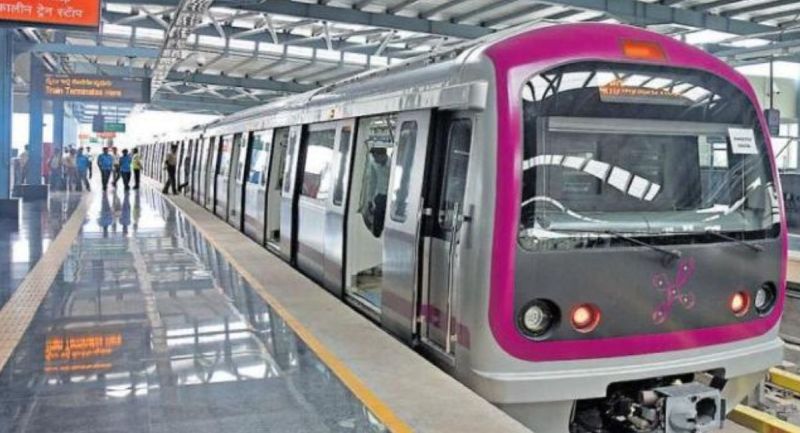India’s ambitious high-speed rail program is gaining traction with the proposed Mumbai–Nagpur High-Speed Rail (MNHSR) corridor — a transformative 741-kilometre project aimed at connecting two of Maharashtra’s most vital cities through cutting-edge rail infrastructure. Envisioned as part of the national strategy to modernize rail transport, the corridor will be developed by the National High-Speed Rail Corporation Limited (NHSRCL).
Strategic Route Integration
The MNHSR corridor is designed to link Mumbai and Nagpur via 12 new stations, significantly improving connectivity across central Maharashtra. These stations are planned at Shahapur, Igatpuri, Nashik, Shirdi, Aurangabad, Jalna, Mehkar, Malegaon Jahangir, Karanja Lad, Pulgaon, Wardha, and Nagpur. The alignment is expected to largely follow the under-construction Samruddhi Mahamarg Expressway, enhancing multimodal integration and minimizing land acquisition complexities.
The route will consist of a combination of elevated, underground, and at-grade sections, tailored to suit the region’s topography and urban environment.
System Specifications and Technology
This high-speed rail line is set to feature state-of-the-art rail technology with a maximum design speed of 350 km/h and an operational speed of 300 km/h, enabling average journey speeds of around 250 km/h. It will operate on standard gauge (1435 mm) tracks and use 25 kV AC overhead catenary systems (OHE) for traction.
Each train is expected to accommodate up to 750 passengers, with operations supported by ETCS Level-2 signaling under the European Rail Traffic Management System (ERTMS). For enhanced safety, the corridor will be equipped with the Urgent Earthquake Detection and Alarm System (UrEDAS) to initiate automatic braking in the event of seismic activity.
Fare and Accessibility
While the exact fare structure is still under consideration, it is expected that ticket prices will be approximately 1.5 times the current First-Class AC fares on Indian Railways. Final pricing will be determined closer to the commencement of commercial operations, ensuring affordability while maintaining financial viability.
Progress and Contractor Engagement
As of late 2024, the project remains in the pre-construction phase, with key groundwork progressing steadily. Aerial LiDAR surveys — critical to determining the precise alignment — were initiated by SECON Pvt. Ltd. – Helica (Italy) JV in March 2021. These surveys are essential to developing the Detailed Project Report (DPR) and understanding the corridor’s topography through advanced 3D mapping techniques.
Several specialized firms have been brought on board for essential studies and design tasks:
- General Arrangement Drawings (GADs): Holtec Consulting Pvt. Ltd.
- Data Collection for DPR: Satra Services and Solutions Pvt. Ltd.
- Social Impact Assessment (SIA) & Resettlement Action Plan (RAP): Monarch Surveyors and Engineering Consultants Pvt. Ltd.
- Environmental Impact Assessment (EIA): GPS Technologies – Shri Krishna Enviro JV
- Traffic & Ridership Study: DIMMTS Ltd.
Outlook
The Mumbai–Nagpur High-Speed Rail project is poised to be a cornerstone in India’s high-speed rail network. By dramatically cutting travel times and enhancing regional connectivity, it supports broader goals of economic decentralization, industrial growth, and sustainable transport development. Once operational, the corridor is expected to redefine mobility across Maharashtra, making high-speed travel accessible to millions.
For ongoing updates, including bid announcements, progress reports, and route developments, stakeholders are encouraged to monitor the NHSRCL’s official website and independent sources such as The Metro Rail Guy.
FAQ (Frequently Asked Questions) on The Mumbai–Nagpur High-Speed Rail project
What is the Mumbai–Nagpur High-Speed Rail (MNHSR) project?
The MNHSR is a proposed 741 km bullet train corridor designed to connect Mumbai and Nagpur via 12 new high-speed rail stations. It is part of India’s broader high-speed rail development plan led by the National High-Speed Rail Corporation Limited (NHSRCL).
Which cities and stations will the train connect?
The corridor will pass through the following 12 stations:
Shahapur, Igatpuri, Nashik, Shirdi, Aurangabad, Jalna, Mehkar, Malegaon Jahangir, Karanja Lad, Pulgaon, Wardha, and Nagpur.
What is the expected speed of the bullet train?
Design (Maximum) Speed: 350 km/h
Operational Speed: 300 km/h
Average Speed: Approximately 250 km/h
What type of infrastructure will be used for the track?
The corridor will include a mix of elevated, underground, and at-grade (ground-level) track segments, depending on geographic and urban factors.
Will the bullet train use a different track gauge?
Yes, the MNHSR will use Standard Gauge (1435 mm), which is different from the broad gauge commonly used in Indian Railways.
What safety systems will be in place?
The project includes the Urgent Earthquake Detection and Alarm System (UrEDAS), designed to detect seismic activity and automatically apply emergency brakes. Advanced signaling (ETCS Level-2 of ERTMS) will also be used.
What is the estimated fare for travel?
Fares are not finalized yet. However, they are expected to be approximately 1.5 times the fare of existing Indian Railways First-Class AC tickets. Final pricing will be announced closer to the project’s completion.
Who is executing the project?
The project is being implemented by the National High-Speed Rail Corporation Limited (NHSRCL). Multiple contractors have been engaged for preliminary surveys, environmental assessments, and technical design.
Is the project under construction?
As of late 2024, the MNHSR is in the pre-construction phase. Aerial LiDAR surveys and data collection for the Detailed Project Report (DPR) are complete or underway. Full-scale construction is yet to begin.
What benefits will this project offer?
Reduced travel time between Mumbai and Nagpur
Boost to regional connectivity and economic development
Job creation during construction and operation phases
Environmentally sustainable alternative to road and air travel
Where can I find updates on the project?
You can find updates on:
- NHSRCL official website
- The Metro Rail Guy – an independent infrastructure tracking platform
- Urban Transport News



